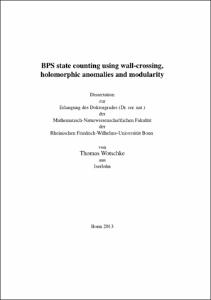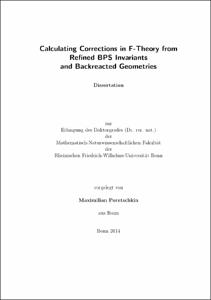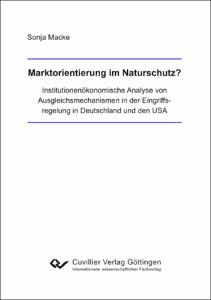Fierro Cota, Cesar Alberto: Modularity of strings on F-theory backgrounds. - Bonn, 2022. - Dissertation, Rheinische Friedrich-Wilhelms-Universität Bonn.
Online-Ausgabe in bonndoc: https://nbn-resolving.org/urn:nbn:de:hbz:5-65544
Online-Ausgabe in bonndoc: https://nbn-resolving.org/urn:nbn:de:hbz:5-65544
@phdthesis{handle:20.500.11811/9725,
urn: https://nbn-resolving.org/urn:nbn:de:hbz:5-65544,
author = {{Cesar Alberto Fierro Cota}},
title = {Modularity of strings on F-theory backgrounds},
school = {Rheinische Friedrich-Wilhelms-Universität Bonn},
year = 2022,
month = apr,
note = {This thesis regards topological string theory on elliptically and genus one fibered Calabi-Yau compactifications to study counting indexes over states in a dual six-, five-, and four-dimensional theory realized by F-theory.
The first part focuses on studying several quantum gravity constraints that should fulfill a six-dimensional theory with minimal supersymmetry. We exploit the modular properties of the topological string partition function, equivalently the elliptic genera of six-dimensional strings, to argue the consistency of such constraints—including the absence of quantum anomalies. In particular, we manage to prove the sublattice non-Abelian weak gravity conjecture for F-/M-theory compactified on elliptically and genus one fibered Calabi-Yau 3-folds admitting a K3 fibration.
In the next part, we focus on a subclass of K3 fibered geometries to analyze their K3 fiber reduced Gromov-Witten theory, equivalently their Noether-Lefschetz’s theory: We find a correspondence between the elliptic genera of Heterotic strings and the enumerative geometry in the reduced K3 fibers. Through Noether-Lefschetz symmetries, we derive that this information encodes the massless spectrum of six-dimensional supergravity theories, the data necessary to compute conjectured refined BPS invariants in compact geometries, and a supersymmetric index for four-dimensional theories with N = 2 supersymmetry. Using the latter result, we examine Heterotic theories with a CHL orbifold construction that possess a 5d M-theory dual interpretation compactified on a genus one fibered Calabi-Yau admitting a K3 fibration. We conclude that the CHL-Heterotic strings elliptic genera must be meromorphic vector-valued lattice Jacobi forms.
In the last part, we turn to study elliptically fibered Calabi-Yau 4-folds and the modularity of their quantum periods. By turning on gauge fluxes, we achieve F-theory compactifications leading to four-dimensional theories with minimal supersymmetry. Moreover, the quantum periods of gauge fluxes interpret as elliptic genera of four-dimensional strings, described by quasi-Jacobi forms. We exemplify these objects and realize that they follow conjectural holomorphic anomaly equations.},
url = {https://hdl.handle.net/20.500.11811/9725}
}
urn: https://nbn-resolving.org/urn:nbn:de:hbz:5-65544,
author = {{Cesar Alberto Fierro Cota}},
title = {Modularity of strings on F-theory backgrounds},
school = {Rheinische Friedrich-Wilhelms-Universität Bonn},
year = 2022,
month = apr,
note = {This thesis regards topological string theory on elliptically and genus one fibered Calabi-Yau compactifications to study counting indexes over states in a dual six-, five-, and four-dimensional theory realized by F-theory.
The first part focuses on studying several quantum gravity constraints that should fulfill a six-dimensional theory with minimal supersymmetry. We exploit the modular properties of the topological string partition function, equivalently the elliptic genera of six-dimensional strings, to argue the consistency of such constraints—including the absence of quantum anomalies. In particular, we manage to prove the sublattice non-Abelian weak gravity conjecture for F-/M-theory compactified on elliptically and genus one fibered Calabi-Yau 3-folds admitting a K3 fibration.
In the next part, we focus on a subclass of K3 fibered geometries to analyze their K3 fiber reduced Gromov-Witten theory, equivalently their Noether-Lefschetz’s theory: We find a correspondence between the elliptic genera of Heterotic strings and the enumerative geometry in the reduced K3 fibers. Through Noether-Lefschetz symmetries, we derive that this information encodes the massless spectrum of six-dimensional supergravity theories, the data necessary to compute conjectured refined BPS invariants in compact geometries, and a supersymmetric index for four-dimensional theories with N = 2 supersymmetry. Using the latter result, we examine Heterotic theories with a CHL orbifold construction that possess a 5d M-theory dual interpretation compactified on a genus one fibered Calabi-Yau admitting a K3 fibration. We conclude that the CHL-Heterotic strings elliptic genera must be meromorphic vector-valued lattice Jacobi forms.
In the last part, we turn to study elliptically fibered Calabi-Yau 4-folds and the modularity of their quantum periods. By turning on gauge fluxes, we achieve F-theory compactifications leading to four-dimensional theories with minimal supersymmetry. Moreover, the quantum periods of gauge fluxes interpret as elliptic genera of four-dimensional strings, described by quasi-Jacobi forms. We exemplify these objects and realize that they follow conjectural holomorphic anomaly equations.},
url = {https://hdl.handle.net/20.500.11811/9725}
}









